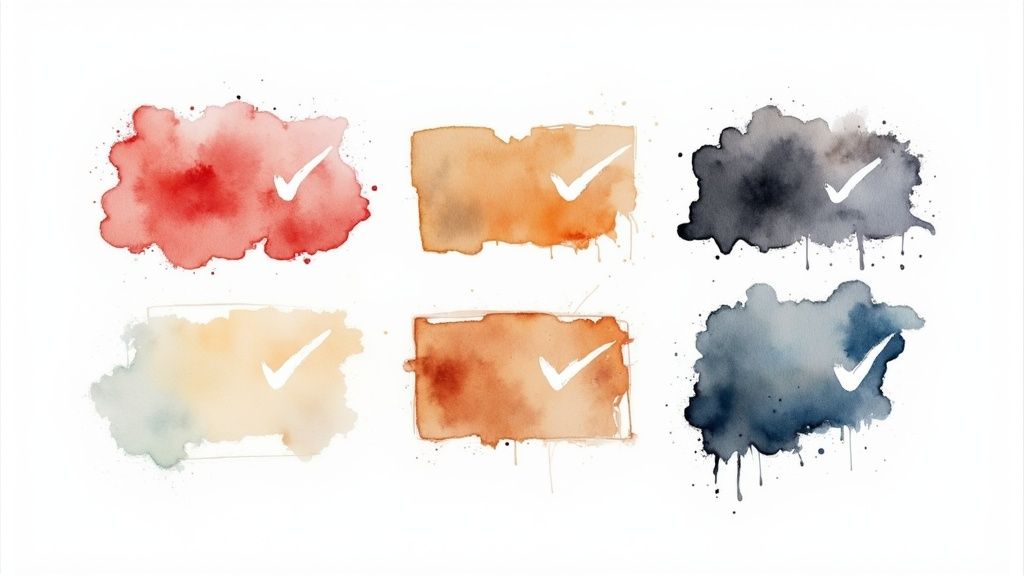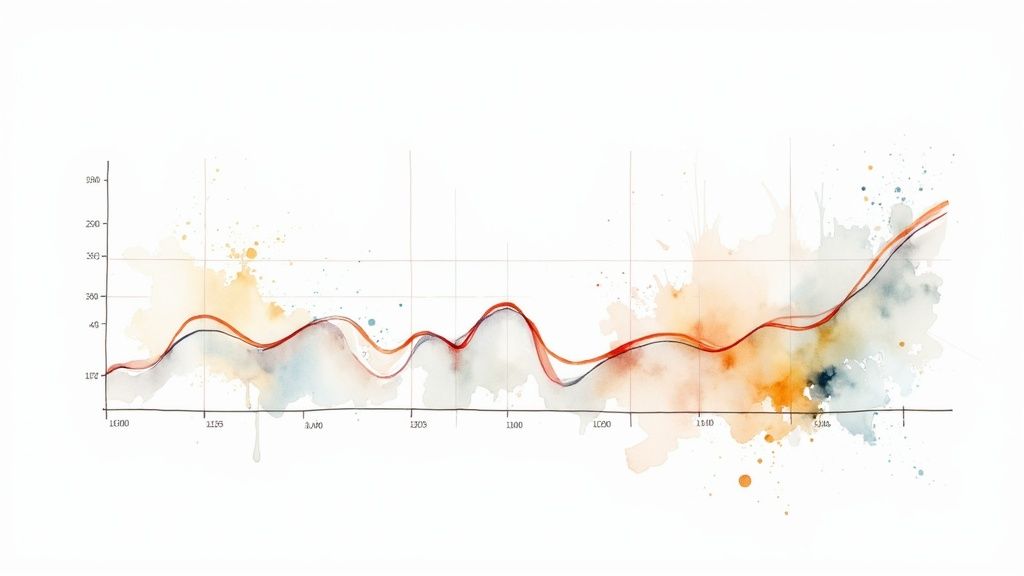Your Dashboards Are a Joke. Here’s How to Fix Them.
Discover essential data visualization best practices to create clear, impactful charts. Learn expert tips to elevate your visualizations today.
Posted by
Related reading
Your Survey Data Analysis is a Waste of Time
Stop guessing and start growing. This guide to survey data analysis cuts the fluff and reveals the unfiltered methods that drive real startup growth.
Stop Asking Useless Survey Questions. Seriously.
Stop guessing. Here are 8 battle-tested ordinal survey question examples you can steal to get real customer insights instead of useless data.
Your Survey Data Is a Goldmine of Polite Lies
A founder's guide to analyse survey data. Learn to cut through noise, find real insights, and make decisions that actually grow your business.
Let's be blunt. Your dashboards are a graveyard of dead numbers. You paid for the fancy BI tool, hired the data people, and now you’re drowning in charts that tell you nothing. You're burning cash based on gut feelings because your "data-driven" culture is a lie, propped up by pretty, useless graphs.
I nearly tanked my first company because I fell in love with a hockey-stick chart that was actively misleading me. Forget the textbook theory. For a deeper dive into the overall strategies and a broader understanding of the principles discussed here, consider exploring a detailed guide on comprehensive data visualization best practices. This is the field guide for founders who'd rather get answers than admire the problem.
These aren't "tips." They're rules forged in the fires of near-bankruptcy. Ignore them, and you’ll be lucky to survive the quarter.
1. Stop Using the Wrong Chart, You Amateur
Picking a chart isn't an art project. It's a tactical decision. Using a pie chart to show a trend over time isn't just wrong, it's incompetent. Your data has one story to tell. Your job is to pick the one chart type that tells it so clearly a five-year-old could get it. Anything else is noise.
You’re either comparing things, showing a change over time, or revealing a relationship. That’s it. Stop trying to get clever with a radar chart when a simple bar chart will do the job.
Takeaway: If you have to explain the chart, you chose the wrong one.
This video gets straight to the point. Watch it.
Trying to visualize complex data streams? Don't even think about charts until your backend can handle the flow. Read this guide to data stream processing so you don't build your house on sand.
2. Your Most Important Number Needs to Punch Me in the Face
If I look at your dashboard and can't find the most important number in three seconds, you've failed. A good dashboard isn't a democracy where all data points are equal. It's a dictatorship. You, the designer, decide what matters most and you make it impossible to miss.
Your main KPI should be huge. Everything else is just supporting commentary. Use size. Use position. Use whatever it takes to scream, "LOOK HERE, THIS IS THE ONLY THING THAT MATTERS RIGHT NOW."
Takeaway: If everything is important, nothing is.

3. Stop Vomiting a Rainbow onto Your Charts
Color isn't for making things "pop." It's a weapon. Use it to highlight, to group, to draw a big red circle around the problem. Using seven different colors for seven different categories is a rookie move that makes your chart unreadable. It's visual clutter that screams "I don't know what's important."
And if you’re still using red and green for good/bad, you’re actively excluding about 8% of your male colleagues. Grow up. Use blue and orange. Better yet, don’t rely on color alone. Use icons, labels, or patterns.
Takeaway: Use color like a sniper, not a clown.

4. Your Chart Has Too Much Crap on It
Every pixel on your chart should be fighting for its life. If it doesn’t directly represent data or help explain it, kill it. Gridlines? Gone. Borders? Dead. 3D effects? Get out of my office. All that junk is what Edward Tufte called "chartjunk" and it’s actively sabotaging your message.
Your job is to remove every single thing you can until the chart breaks. Then put one thing back. That’s it. You're trying to deliver an insight, not an art piece for a gallery.
Takeaway: A perfect chart isn't when there’s nothing left to add, but when there’s nothing left to take away.
5. A Number Without Context Is Useless
"We did $100,000 in revenue." Who cares? Is that good? Is that bad? Is that up or down? Without context, a number is just a number. It's trivia.
You absolutely must show your data against a target, a historical benchmark, or an industry average. "We did $100,000, which is 25% above our goal and 15% better than this time last year." Now we’re talking. Now that’s an insight that can drive a decision. Also, your bar charts better start at zero, or you're lying with data.
Takeaway: Data is trivia; context is insight.
6. If It Doesn't Work on My Phone, It Doesn't Work
Newsflash: your board members are looking at your dashboard on their phones while walking into a meeting. If they have to pinch and zoom, you’ve already lost them. Designing for a 27-inch monitor is a fantasy.
Design for the phone first. This forces you to be ruthless about what matters. The tiny screen is a filter for bullshit. If an element isn't critical enough to make it onto the mobile view, it probably wasn't that important to begin with.
Takeaway: Design for the pocket, not the wall.
7. Stop Making Static Pictures of Data
A static chart is a lecture. An interactive chart is a conversation. Don’t just show your team the answer; give them a tool to find their own answers. A simple filter or a drill-down capability can transform a passive report into an active exploration tool.
But don't go crazy. Adding a dozen filters "just in case" is lazy. Every interactive element must answer a specific, predictable question your user will have. If it doesn't, it’s just another distraction.
Takeaway: Give them a camera, not just a photograph.
8. Tell Me a Story, Not a Statistic
Your data needs a plot. A beginning, a middle, and an end. Don't just show a chart; frame it. "Our churn was spiking (the problem), so we rolled out this new onboarding flow (the action), and here's the chart showing churn dropping by 30% (the result)."
Nobody makes a decision based on a raw number. They make decisions based on the story that number tells. Your job is to be the storyteller. Lead your audience by the nose from the problem to the unavoidable conclusion your data points to.
Takeaway: Data doesn’t speak for itself; you’re its translator.
Stop pretending you'll find the hidden story in your customer feedback by staring at spreadsheets—you won't, you'll just go blind. Let Backsy.ai instantly visualize what your users are screaming at you so you can finally fix what’s broken.